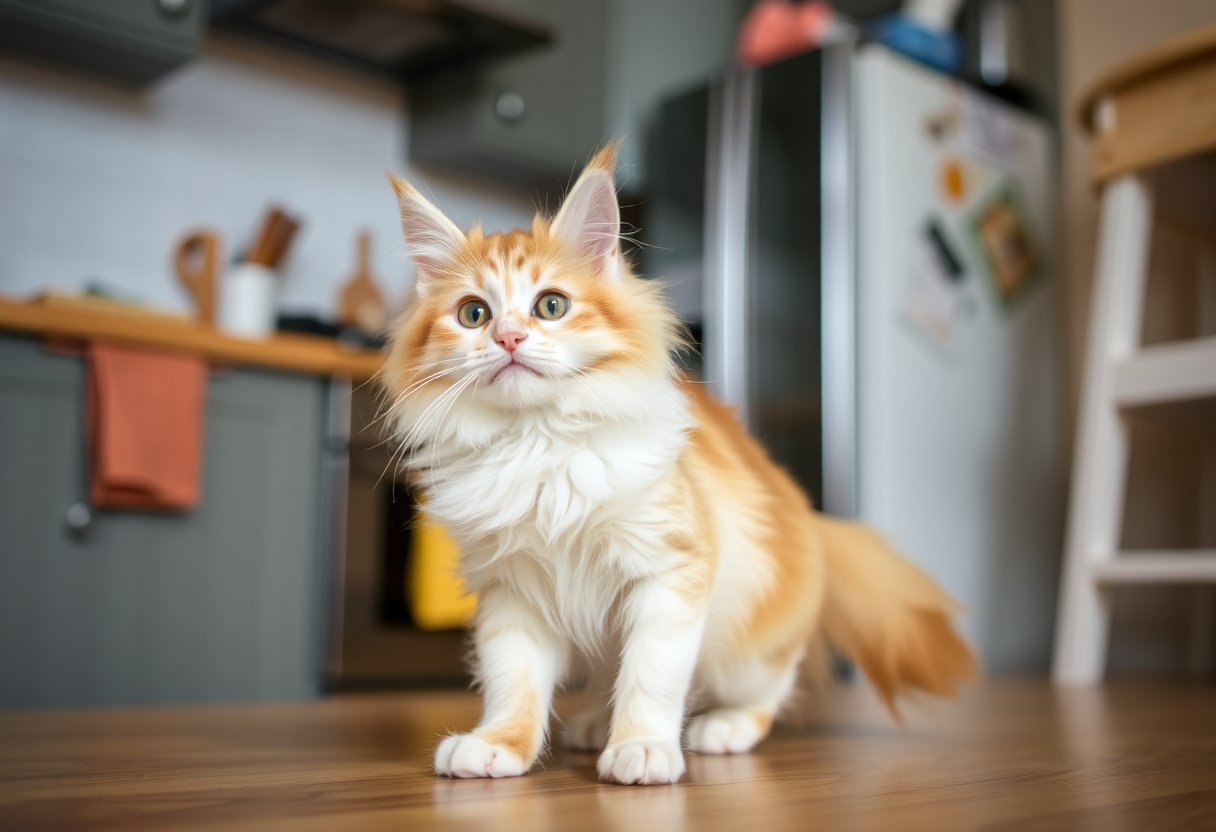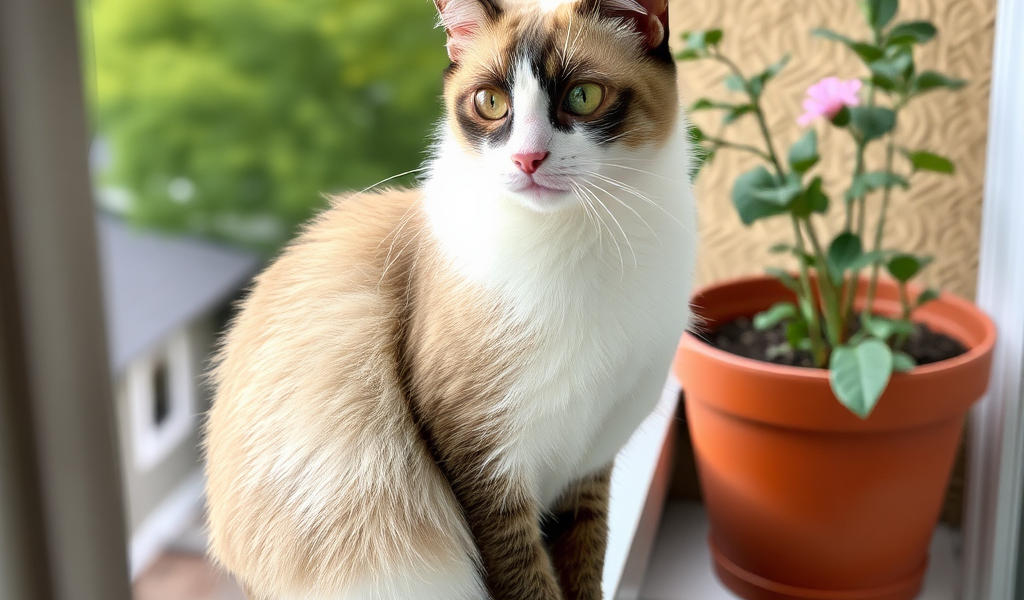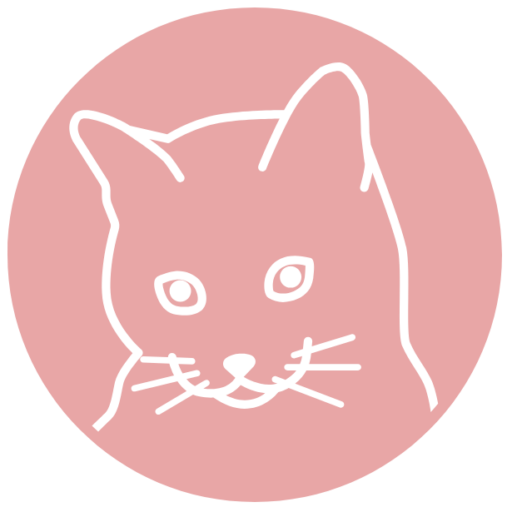Have you ever watched your cat knead happily on a soft blanket or your lap, their little paws rhythmically pushing and pulling as if they were making dough? This adorable behavior, often accompanied by purring and a look of pure bliss, might leave you wondering about its significance. Kneading, also known as “making biscuits,” is not just a cute quirk; it has deep-rooted origins and meanings that date back to a cat’s early kittenhood. In this blog post, we’ll dive into the science behind this charming feline habit, exploring its psychological and evolutionary functions, as well as its connections to comfort and affection. Whether you’re a seasoned cat owner or simply captivated by these mysterious creatures, join us as we unravel the fascinating reasons why cats knead and what it reveals about their instincts and emotions.

1. The Origins of Kneading in Kittens
Kneading is an endearing behavior that often leaves cat owners both amused and curious. To truly understand why our feline friends knead, we must first delve into the origins of this delightful habit, which traces back to their earliest days as kittens.
From the moment they are born, kittens instinctively knead their mother’s belly to stimulate milk flow. This behavior is not only vital for their nourishment but also serves as a source of comfort and security. The act of kneading, often described as a rhythmic pushing and pulling motion with their paws, allows the kittens to enjoy the warmth and closeness of their mother, reinforcing a bond that is crucial for their emotional development.
As kittens grow and begin to explore their surroundings, the kneading behavior remains ingrained in their instincts. It transforms into a comforting mechanism that they carry into adulthood. Adult cats may knead on soft surfaces like blankets, pillows, or even their human companions, recreating the soothing sensations they experienced as helpless kittens. This behavior is often accompanied by purring and a blissful expression, suggesting that kneading is a form of self-soothing that brings them joy and relaxation.
Understanding the origins of kneading helps us appreciate the deeper emotional ties our cats have to this behavior. It’s a playful reminder of their kittenhood, a time when they relied on their mother for survival and affection. So, the next time you catch your cat kneading away, remember that they are not just being adorable; they are connecting to their past and expressing a sense of comfort and love in their own unique way.
2. The Psychological Significance of Kneading
Kneading, often characterized by the rhythmic pushing of their paws against a soft surface, is a behavior that evokes a sense of comfort and nostalgia among cat owners. But beyond its adorable appearance, kneading holds deep psychological significance rooted in a cat’s early development and emotional well-being.
When kittens nurse from their mothers, they instinctively knead her belly with their tiny paws to stimulate milk flow. This behavior is a form of comfort and security, creating a strong association between kneading and feelings of safety and contentment. As cats grow, this instinctual behavior often persists, evolving into a method of self-soothing and stress relief.
For adult cats, kneading can serve as a way to express happiness and relaxation, acting as a bridge to their cherished kittenhood. When your feline friend kneads on your lap or a favorite blanket, it’s their way of trying to recreate that warm, nurturing experience of being with their mother—an affirmation confidence in their surroundings as well as the individuals around them.
Kneading also plays a role in marking territory. Cats have scent glands in their paws, and by kneading surfaces, they deposit their scent, claiming their space. This behavior can indicate that a cat feels secure and at home, reinforcing their bond with their human companions.
Understanding the psychological significance of kneading can deepen our appreciation for this charming behavior. It’s not just a quirk; it reflects a cat’s emotional state, their need for comfort, and their instinctual ties to their early life experiences. So next time you see your cat kneading, take a moment to enjoy this tender display of affection and the rich tapestry of emotions it represents.

3. Kneading and Bonding: A Sign of Affection
Kneading is one of those endearing cat behaviors that cat lovers often find irresistible. When your feline friend kneads with their paws, rhythmically pushing their soft pads into a blanket, your lap, or even a nearby cushion, it’s more than just a charming quirk; it’s a profound expression of affection and bonding. This behavior, often referred to as “making biscuits,” originates from kittenhood, when young cats knead their mother’s belly to stimulate milk flow. This instinctual action creates a sense of comfort and security, establishing a lasting association between kneading and nurturing.
As cats grow older, they carry this behavior into adulthood, often performed on their favorite people or cherished belongings. Kneading can serve as a form of communication, signaling that your cat feels safe and content in your presence. The gentle push and pull of their paws not only helps them express their affection but also strengthens the bond between you and your furry companion.
Moreover, kneading can be a source of comfort for cats, reminiscent of their early days. The act releases endorphins, promoting relaxation and happiness, which is why you might notice your cat kneading when they’re especially cozy or content. As they knead away, you may also feel their purring vibrations increase, creating a soothing atmosphere that enhances your connection. So, the next time your kitty kneads on your lap or a favorite blanket, take it as a loving gesture—a signal that they trust you and consider you a cherished part of their world.
4. The Evolutionary Perspective: Why Cats Knead
Kneading, often referred to as “making biscuits,” is an instinctual behavior that can be traced back to the evolutionary roots of our feline friends. This endearing action, where cats rhythmically push their paws in and out against a soft surface, is believed to originate from their kittenhood. When newborn kittens nurse from their mothers, they knead her belly to stimulate milk flow. This tactile motion not only ensures they receive nourishment but also fosters a sense of safety and comfort.
As cats grow, this behavior evolves but remains deeply ingrained in their psyche. From an evolutionary perspective, kneading may serve several purposes. For one, it’s a way for adult cats to mark their territory. Cats have scent glands in their paws, and by kneading, they deposit their unique scent onto the surface, claiming it as their own. This instinctual action can be traced back to wild ancestors who needed to establish their presence in their environment.
Furthermore, kneading can act as a stress-relieving mechanism. Just as humans might fidget or engage in repetitive motions when anxious, cats find solace in kneading. It’s a way for them to express contentment and relaxation, making it one of the many behaviors that strengthen the bond between cats and their humans. Understanding this evolutionary backdrop allows us to appreciate kneading not just as a quirky habit, but as an essential, instinctive behavior rooted in a cat’s history and emotional well-being. So, the next time your furry friend kneads away on your lap, remember that they are engaging in a timeless ritual that connects them to their wild ancestors while expressing their affection for you.
5. Common Myths and Misconceptions about Kneading
Kneading is one of those endearing feline behaviors that often leaves cat owners both amused and puzzled. However, while many people have witnessed their furry companions rhythmically pushing their paws in and out against soft surfaces, several myths and misconceptions about this behavior abound. Let’s take a moment to debunk some of these misunderstandings.
One common myth is that kneading is a sign of an anxious or stressed cat. In reality, kneading is generally a comforting and instinctual behavior that dates back to kittenhood, when kittens knead their mother’s belly to stimulate milk flow. While a stressed cat may engage in kneading, it’s essential to recognize that most cats do it as a sign of contentment and relaxation, often when they are cuddled up with their owners or resting in a cozy spot.
Another misconception is that kneading indicates that a cat is marking its territory. While it is true that cats have scent glands in their paws, kneading is primarily about comfort and not territorial marking. When cats knead, they are often seeking out a place that feels safe and secure, much like how they would have felt as kittens nestled against their mother.
Some people also believe that kneading is a learned behavior from their environment or interactions with humans. However, this instinctive action is rooted deeply in a cat’s genetics. All cats, regardless of their upbringing or breed, demonstrate kneading behavior, suggesting that it is an inherent trait rather than a learned one.
Lastly, there’s a notion that kneading should be discouraged, as it might harm furniture or cause discomfort to humans. While it’s true that a cat’s kneading can be a bit vigorous, it’s important to remember that this behavior is an expression of affection and comfort. Instead of trying to stop it, consider providing your cat with a designated kneading blanket or pillow. This way, they can indulge in their adorable habit without damaging your belongings or causing you discomfort.
Understanding the true nature of kneading helps deepen the bond between you and your feline friend. By debunking these myths, we can appreciate kneading as a fascinating and sweet behavior rooted in the very essence of what it means to be a cat.

6. How to Encourage or Discourage Kneading Behavior
Kneading is an endearing cat behavior that many pet owners relish, but there may be times when you want to encourage or discourage it based on your specific circumstances. If you find your feline’s kneading to be a comforting and charming gesture, there are ways to foster this behavior further. One effective method is to provide your cat with soft, textured surfaces to knead on, such as plush blankets or specially designed kneading mats. This not only creates a designated area for this behavior but also enhances their comfort and satisfaction during the process. You might also try engaging in gentle petting or offering treats while they knead, reinforcing the positive association with this adorable activity.
On the flip side, if your cat’s kneading disrupts your peace—say, if they tend to knead on your lap during a quiet evening or on your freshly laundered clothes—there are techniques to discourage it. First, gently redirect your cat to their designated kneading area when they start the behavior, reinforcing this new habit with praise or treats. Additionally, you can create a barrier by placing a textured object, like a scratching post or a sturdy blanket, between you and your cat when they attempt to knead on your lap. Consistency is key; over time, they may learn to associate kneading with their own special spot rather than on you or your belongings.
Ultimately, understanding the reasons behind kneading can also help guide your approach. If your cat is kneading out of comfort or stress relief, ensuring they feel secure and relaxed in their environment can also help manage the frequency of this behavior, allowing your furry friend to express themselves while keeping your space harmonious.
In conclusion, the charming behavior of kneading in cats is a delightful blend of instinct and affection that reflects their unique personalities and histories. Whether they are seeking comfort, expressing love, or simply indulging their inner kitten, kneading brings joy not only to our feline friends but also to those who observe this adorable ritual. Understanding why cats knead enriches our bond with them, allowing us to appreciate their behaviors on a deeper level. So, the next time your cat curls up on your lap and begins to knead, take a moment to savor the warmth of this special moment—it’s a testament to the love and trust they feel in your presence. If you’re a fellow cat lover eager to learn more about these intriguing creatures, make sure to explore additional insights and stories on our Blogger platform. Thank you for joining us on this exploration of feline behavior!


